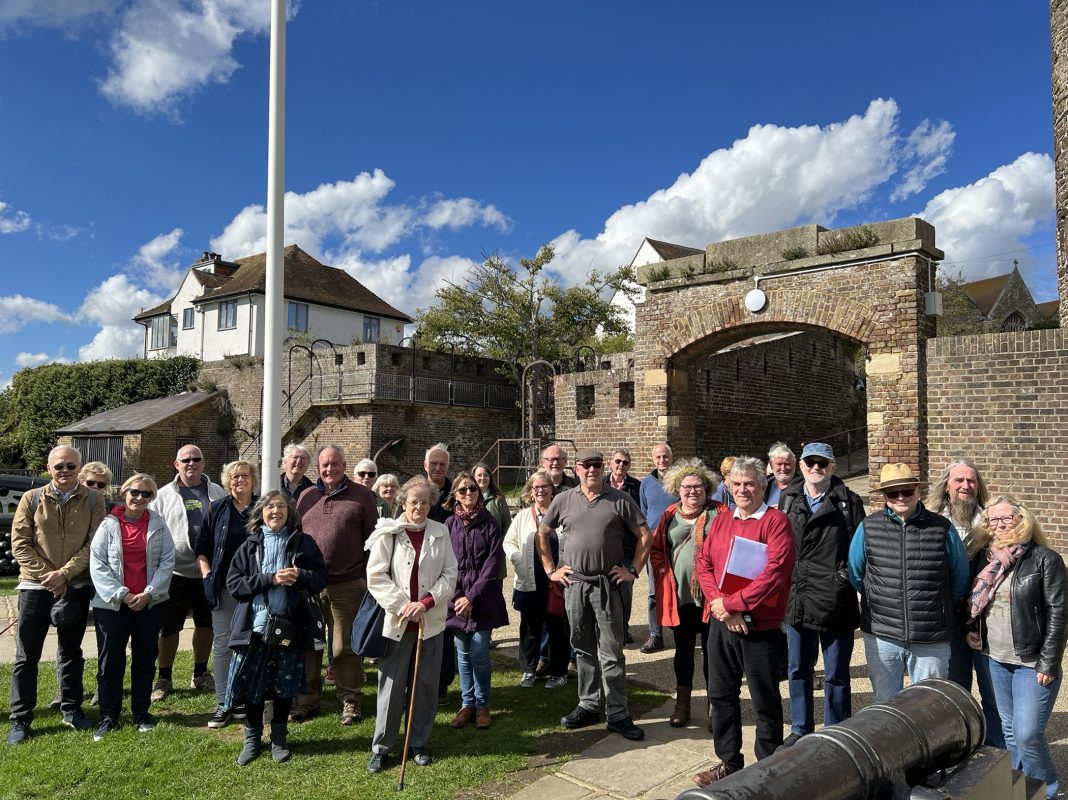What an extraordinary town we live in! As part of the Rye Arts Festival, there was a special two hour walk called “Rye at War” on Sunday, September 25. Our guide, Simon Parsons, took us to some of the key locations of the effects of war on the town, especially the second world war.
We began with the model of Rye in the Heritage Centre. It’s an amazing replica of Rye’s historic core, showing the streets, houses and life as it was in the 1850s.
But we could not dwell for long… for there was much to show us outside. Simon had photographs showing bomb-damage in different parts of the town. 4,500 people lived in Rye during WW2, and about 1,200 properties were either destroyed or damaged as a result of bomb damage. We looked out from various vantage points to see locations of aircraft crashes, fires set to try to confuse bombers away from the town, and also locations of much older battles in the harbours surrounding Rye and Winchelsea.
Simon’s own family experience during WW2 really captured everyone’s attention. His parents met during the war, with his father stationed on a nearby farm to man a searchlight. Simon was able to give accounts of what life was like for his mother, forced into a critical civil defence job when she was just 19 years old. Some of our audience also had relatives sent out of London as evacuee children, and we heard more stories of life-long friendships as a result.
There were some amusing and very poignant stories. For example, W. J. Bennetts, on the High Street, hastily provided menswear for a Spitfire pilot who had crash-landed and only had his pyjamas on underneath his flight jacket. Edward Burra (called one of the greatest overlooked geniuses of British art) spent the war growing onions in the South Undercliff allotments to replace the unavailable French onions.
However, the terror of living under the flight path of bombers, as well as the Battle of Britain going on in the skies overhead, must have been horrendous for Rye residents. Edward Burra himself depicted the horror in his “Soldiers at Rye” painting. Simon directed us to Imperial War Museum archive material of Rye residents’ accounts of their own painful experiences. We were guided to further literature and talks on Sussex Home Guards, the pillboxes around the coast, as well as other talks to go on in the future. This walk was a fantastic, informative experience for all.



